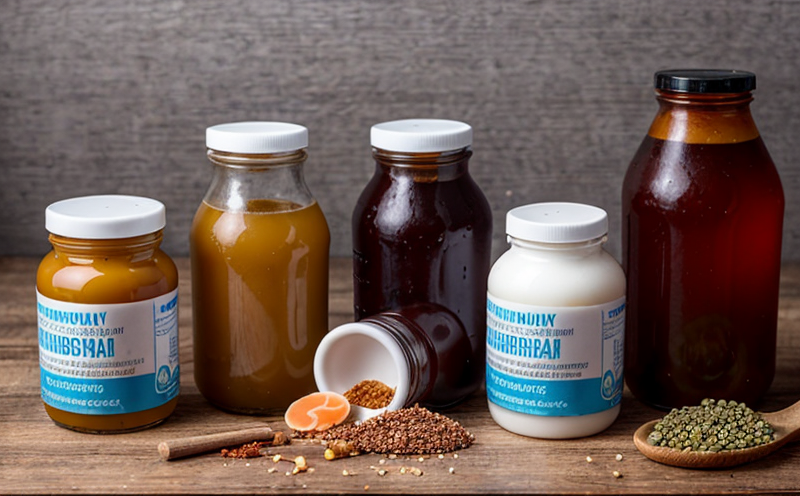AOAC 2006.06 Yeast and Mold Testing in Fermented Foods
The AOAC Official Method 2006.06 is a widely recognized standard for the detection and quantification of yeast and mold species in fermented foods, ensuring food safety and quality. This method plays a crucial role in the microbiological testing sector, particularly within the realm of probiotics and fermented products. Yeast and mold can significantly impact the flavor, texture, shelf life, and overall safety of fermented foods, making their accurate quantification essential.
The AOAC 2006.06 method involves several steps that ensure precision and reliability in microbial analysis. The process begins with proper sampling techniques to obtain representative samples from various stages of fermentation. Samples are then prepared by diluting them into appropriate media, typically nutrient agar or selective media like Dichloran Rose Bengal Chloramphenicol (DRBC) for molds, and Yeast Extract Peptone Dextrose (YEPD) broth for yeasts.
Following sample preparation, the method employs a range of microbiological techniques to isolate and identify yeast and mold species. This includes incubation at specific temperatures and times to allow colonies to grow on the media. After growth, colonies are examined under a microscope or identified using colony characteristics such as morphology, color, and texture.
The AOAC 2006.06 method ensures accurate quantification through the use of standard operating procedures (SOPs) that guide every step of the process. These SOPs include strict quality control measures to minimize errors and ensure reproducibility. The method is validated using recovery studies, where known quantities of yeast and mold are added to samples, followed by analysis to confirm accuracy.
The importance of this method extends beyond just detection; it also provides insights into the microbial ecology of fermented foods, helping manufacturers understand the role of specific species in fermentation processes. This knowledge can be leveraged to optimize production methods and enhance product quality.
Industry Applications
- Fermentation Industry: Ensures food safety and quality by identifying potentially harmful microorganisms.
- Food Manufacturing: Supports compliance with regulatory standards for fermented products.
- R&D and Quality Assurance: Provides data to optimize fermentation processes and improve product stability.
- Procurement: Helps in sourcing raw materials that meet strict microbiological criteria.
The method is particularly relevant in the production of dairy products, sausages, pickles, and other fermented foods where yeast and mold can have a significant impact on product quality. By adhering to this standard, food producers ensure their products are safe for consumption and meet regulatory requirements.
Competitive Advantage and Market Impact
- Enhances brand reputation by ensuring product safety and quality.
- Supports compliance with international standards such as ISO 26178 and FDA regulations.
- Facilitates market entry into countries that mandate stringent microbial testing.
- Promotes innovation in fermented food products through accurate microbiological analysis.
The AOAC 2006.06 method is a cornerstone of microbiological testing, providing reliable data that informs critical decisions within the industry. By ensuring accurate and consistent results, this method contributes to the development of safer and higher-quality fermented foods, enhancing consumer trust and satisfaction.
Use Cases and Application Examples
In practice, the AOAC 2006.06 method is used in various stages of product development and quality assurance. During fermentation, it helps monitor the growth of beneficial yeast and mold species to ensure optimal flavor and texture. Post-production, it ensures that products meet safety standards by detecting any potential contamination.
For instance, a dairy company might use this method during cheese production to ensure that only specific strains of molds are present, contributing to the characteristic flavors and textures. Similarly, in the production of sausages, the method can help identify any unwanted yeast or mold species that could affect product stability and shelf life.
The method's application also extends to quality assurance departments where it is used for routine checks on incoming raw materials. By ensuring that all ingredients meet strict microbiological criteria, these checks contribute to the overall safety and quality of final products.





